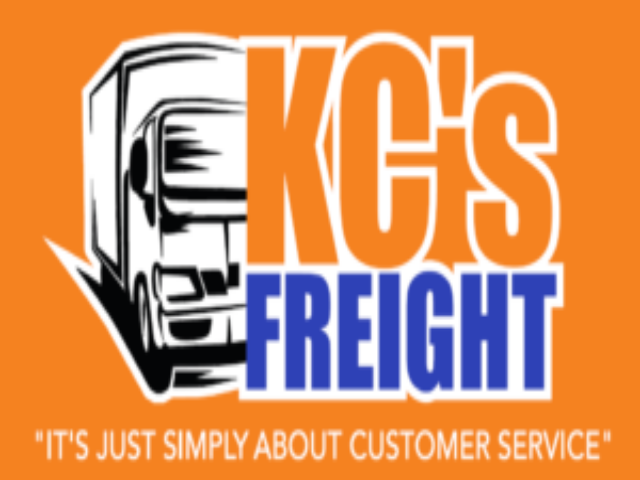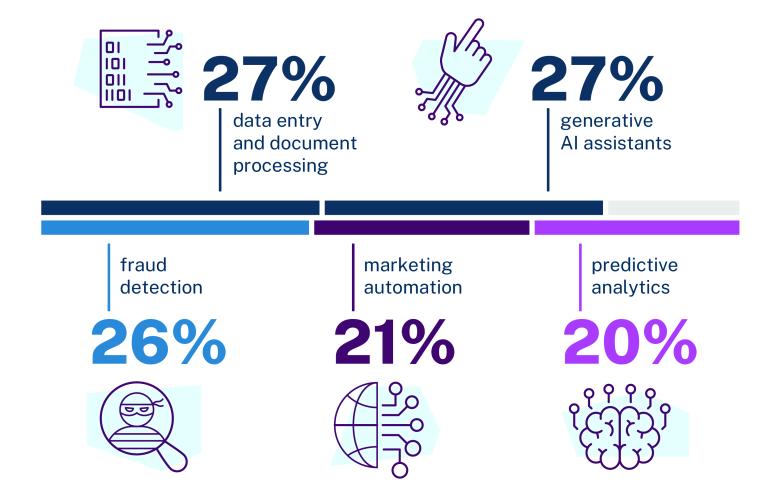Artificial intelligence isn’t just for tech giants anymore. Today’s small businesses can harness AI’s transformative power without breaking the bank. From automating routine tasks to enhancing customer experiences, AI tools have become surprisingly accessible and affordable for companies of all sizes.
We’ve witnessed a remarkable shift in the AI landscape. Cloud-based services, open-source tools, and pre-trained models now offer cost-effective solutions that were once exclusive to large corporations. Small businesses can leverage AI chatbots for customer support, implement data analytics services, and deploy automation solutions—all while maintaining lean budgets.
The key to successful AI implementation lies in focusing on specific business needs rather than broad applications. Whether you’re looking to streamline operations, boost sales, or improve customer engagement, there’s an AI solution that fits both your requirements and your budget. Let’s explore the most effective strategies for bringing AI into your small business without the enterprise-level price tag.
Need help integrating AI technologies into your business? Get in touch with AGR Technology today to see how we can help!
Reviews from some of our happy customers:
Supporting businesses of all sizes to get ahead with digital solutions






Why work with us?
Understanding AI Implementation for Small Businesses

AI implementation transforms how small businesses operate in 2025. We’ve witnessed a fundamental shift where enterprise-level AI capabilities now fit comfortably within small business budgets. Cloud-based AI services democratize access to powerful tools that once required million-dollar investments.
Current AI Landscape for Small Enterprises

Small businesses access AI through three primary channels: cloud-based platforms, open-source solutions, and AI-as-a-Service offerings. Google AI, IBM Watson, and AWS AI provide scalable solutions whilst Open-source tools like TensorFlow and PyTorch eliminate licensing fees entirely.
The numbers tell a compelling story. Businesses implementing AI report:
- Over the next three years, 92 percent of companies plan to increase their AI investments
- 47% of the C-Suite say their companies are deeloping gen AI tools too slowly despite 60% started investing more than a year ago
According to the Department of Industry Australia the following statistics apply for AI use-cases:
- data entry and document processing (27%)
- generative AI assistants (27%)
- fraud detection (26%)
- predictive analytics (21%)
- marketing automation (20%).
Key Benefits AI Brings to Small Operations
AI delivers measurable improvements across five critical areas:
Customer Service Enhancement: AI chatbots handle an increasing number of of routine inquiries, reducing response times from hours to seconds. Small retail businesses using AI-powered support can often see higher customer satisfaction scores.
Data-Driven Decision Making: AI analytics tools can process customer data anywhere from 100x faster than manual methods. Restaurant owners can for example predict peak hours with high levels of accuracy, optimizing staff schedules and reducing labor costs.
Inventory Optimization: AI-powered inventory management reduces holding costs. Small e-commerce businesses prevent stockouts while maintaining less inventory on hand.
Marketing Personalization: AI algorithms analyze customer behavior patterns to deliver personalized recommendations. Small online stores can achieve higher conversion rates using AI-driven product suggestions.
Process Automation: Robotic Process Automation (RPA) handles repetitive tasks like invoice processing and data entry. Small accounting firms save time through AI automation.
Common Misconceptions About AI Adoption
Three myths prevent small businesses from embracing AI:
“AI Requires Technical Expertise”: Modern AI platforms feature drag-and-drop interfaces. No coding knowledge needed. Pre-trained models handle complex tasks out-of-the-box.
“AI Is Too Expensive”: Cloud-based AI services are increasingly affordable with options as low as $20 per month. Compare this to hiring additional staff at $3,000+ monthly. ROI typically occurs within 3-6 months.
“AI Replaces Human Workers”: AI augments human capabilities rather than replacing employees. Staff focus on creative and strategic tasks while AI handles routine work.
Assessing Your Business Needs and Readiness
Before diving into AI implementation, we need to evaluate where our business stands and what we’re trying to achieve. This assessment forms the foundation of a successful AI strategy that delivers real value without overextending resources.
Identifying Key Pain Points
Start by mapping out the specific challenges that slow down our operations. Common pain points for small businesses include spending 15-20 hours weekly on repetitive data entry, losing potential revenue due to poor inventory management, or experiencing longer response times during peak customer service hours. Examples include:
- Manual invoice processing taking 30+ minutes per document
- Customer inquiries requiring 2-3 email exchanges before resolution
- Marketing campaigns with conversion rates below 2%
- Inventory counts causing 4-6 hour operational disruptions
Prioritize pain points based on their impact on revenue and customer satisfaction. A retail business might focus on inventory optimization first if stockouts cost $10,000 monthly, while a service company might prioritize customer response automation if delays lead to 15% client churn.
Evaluating Resources and Budget
Calculate the actual costs of current inefficiencies to establish our AI investment baseline. If manual processes cost $5,000 monthly in labor, a $500/month AI solution delivering 60% efficiency gains pays for itself immediately.
Assessment factors include:
- Financial capacity: AI solutions range from $20-$2,000 monthly depending on complexity
- Staff readiness: Many small businesses report successful AI adoption without hiring new technical staff
- Time availability: Initial setup typically requires 10-20 hours over 2-4 weeks
- Technical infrastructure: Most cloud-based AI tools work with existing systems
Cost-Effective AI Tools and Platforms
Implementing AI doesn’t require a massive investment when you choose the right tools and platforms. We’ve identified three categories of solutions that deliver enterprise-level capabilities while keeping costs manageable for small businesses.
Free and Open-Source Solutions
Open-source AI frameworks provide powerful capabilities without licensing fees. TensorFlow, PyTorch, and Scikit-learn offer comprehensive machine learning libraries that rival expensive proprietary software. These tools give businesses access to cutting-edge AI technology while maintaining complete control over their implementations.
Popular open-source options include:
- TensorFlow: Google’s framework for building neural networks and machine learning models
- PyTorch: Facebook’s flexible deep learning platform preferred for research and production
- Scikit-learn: Python library ideal for data mining and predictive analytics
- OpenCV: Computer vision library for image processing and recognition tasks
- Hugging Face: Pre-trained models for natural language processing
Small businesses typically save $5,000-$20,000 annually by choosing open-source alternatives over proprietary solutions. The trade-off involves dedicating time to learn these platforms or hiring freelance developers familiar with open-source ecosystems.
Cloud-Based AI Services
Cloud platforms democratize AI by offering pay-as-you-go pricing models that scale with your business. AWS, Google Cloud, and Microsoft Azure provide AI-as-a-Service (AIaaS) solutions starting at $20-$50 monthly for basic implementations.
These platforms eliminate infrastructure costs and technical complexity. Businesses access pre-built AI models for common tasks like sentiment analysis, image recognition, and chatbot development. Cloud-based solutions particularly benefit e-commerce businesses needing product recommendations, fraud detection, and inventory forecasting capabilities.
Strategic Implementation Approaches
We’ve found that successful AI adoption for small businesses hinges on thoughtful implementation rather than rushing into complex solutions. Our experience shows that strategic rollout minimizes risks while maximizing return on investment.
Phased Rollout Strategy
Implementing AI in phases reduces financial strain and allows teams to adapt gradually. We recommend starting with one department or process that offers the highest potential impact. For example, a retail business might begin with inventory management AI, achieving examples of 20-30% reduction in stock-outs before expanding to customer service chatbots.
Phase 1 typically involves automating a single repetitive task over 30-60 days. Phase 2 expands the solution based on initial results and team feedback. Phase 3 integrates AI across connected processes. This approach spreads costs over 6-12 months while building internal expertise.
Key phasing benchmarks include:
- Month 1-2: Deploy first AI tool and measure baseline metrics
- Month 3-4: Analyze results and train team members
- Month 5-6: Scale successful implementations
- Month 7+: Explore advanced features and additional use cases
Pilot Projects and Testing
Pilot projects validate AI investments before full-scale deployment. We suggest allocating 10-15% of your planned AI budget to initial testing. Small businesses using this approach report higher success rates compared to immediate full implementation.
Effective pilot projects share these characteristics:
- Clear success metrics defined upfront
- Limited scope covering 3-4 weeks
- Focused on solving one specific problem
- Involvement of 2-3 key team members
- Documented processes and learnings
Testing frameworks matter. A/B testing compares AI performance against existing methods. For instance, comparing AI-generated email campaigns against traditional ones helps quantify improvements in open rates and conversion metrics.
Outsourcing vs. In-House Development
The choice between outsourcing and in-house development impacts both costs and control. Outsourcing to specialized providers costs 40-60% less than building internal AI teams. Small businesses can experience significant savings annually through strategic outsourcing.
Outsourcing Benefits:
- Access to experienced AI developers
- Faster deployment (2-3 months vs. 6-12 months)
- No recruitment or training costs
- Scalable expertise on demand
In-House Development Advantages:
- Complete control over AI systems
- Deeper integration with existing processes
- Long-term cost savings after initial investment
- Proprietary knowledge retention
Hybrid approaches work well for many small businesses. We’ve seen companies outsource initial development then bring maintenance in-house. This model reduces startup costs while building internal capabilities over 12-18 months.
Smart implementation strategies transform AI from an expensive experiment into a profitable investment. By following phased rollouts, testing thoroughly, and choosing the right development approach, small businesses achieve AI success without breaking budgets.
Key Applications for Small Businesses
AI transforms small business operations through targeted applications that deliver immediate value. We’ve identified three critical areas where affordable AI solutions create the most significant impact for resource-conscious businesses.
Customer Service Automation
AI-powered customer service automation revolutionizes how small businesses interact with their customers 24/7. Modern chatbots handle routine inquiries without human intervention, reducing response times from hours to seconds. These systems process common questions about business hours, product availability, shipping status, and return policies automatically.
Virtual assistants now manage appointment scheduling, order tracking, and basic troubleshooting tasks. A local dental practice for example implementing AI chat can reduce missed appointments by 40% through automated reminder systems and rescheduling options.
AI tools analyze conversation patterns to improve responses continuously. They escalate complex issues to human agents while providing context from previous interactions. This hybrid approach maintains personal touch while maximizing efficiency.
Marketing and Sales Enhancement
AI marketing tools create personalized campaigns that previously required entire marketing teams. These platforms can analyze customer behavior patterns across 15+ data points including purchase history, browsing habits, and demographic information. Small businesses achieve 3x better engagement rates using AI-generated content recommendations.
Social media management becomes effortless with AI scheduling tools that identify peak engagement windows. These platforms suggest content topics based on trending conversations and competitor analysis. AI-powered ad targeting reduces customer acquisition through precise audience identification.
Data Analytics and Decision Making
AI analytics transform raw business data into actionable insights within minutes rather than days. These tools identify sales trends, predict inventory needs, and highlight revenue opportunities that manual analysis misses.
Predictive analytics forecast cash flow patterns with 85% accuracy, helping businesses plan investments and manage expenses proactively. AI dashboards consolidate data from multiple sources including point-of-sale systems, website analytics, and customer databases into unified reports.
Customer behavior analysis through AI reveals purchasing patterns invisible to human observation. The technology identifies which products customers buy together, optimal pricing points, and churn risk indicators. Small e-commerce businesses increase average order values by 22% using AI-generated product recommendations. These insights enable data-driven decisions that compete with larger enterprises’ analytical capabilities.
Building Your Implementation Roadmap
Creating a structured AI implementation roadmap transforms overwhelming technology adoption into manageable steps that deliver measurable results. We’ve found that businesses following a clear roadmap achieve 3x faster ROI compared to those implementing AI solutions randomly.
Setting Realistic Goals
Establishing achievable AI objectives starts with understanding your current capabilities and defining success metrics that align with business outcomes. We recommend using the SMART framework—Specific, Measurable, Achievable, Relevant, Time-bound—adapted for AI initiatives.
Begin by documenting baseline performance metrics for processes you’re targeting. For customer service automation, track current response times (average 24-48 hours), resolution rates (typically 60-70%), and staff hours dedicated to routine inquiries (often 20-30 weekly hours). Set initial AI goals to improve these metrics by 25-30% within 90 days rather than aiming for complete automation immediately.
Break larger objectives into quarterly milestones:
- Quarter 1: Deploy AI chatbot handling routine inquiries
- Quarter 2: Expand chatbot capabilities coverage across the business
- Quarter 3: Integrate AI analytics for customer insights
- Quarter 4: Scale successful implementations across departments
Match AI capabilities to business maturity levels. Early-stage businesses focus on single-point solutions like automated email responses or basic inventory forecasting. Established businesses tackle multi-channel customer engagement or predictive analytics after mastering foundational tools.
Training and Skill Development
Successful AI adoption depends on team readiness and continuous learning rather than hiring expensive specialists. We’ve identified three cost-effective approaches that prepare teams for AI integration within 30-60 days.
Internal Champions Program: Designate 2-3 employees as AI champions who dedicate 5 hours weekly to learning platforms. Free resources like Google’s AI Essentials Certificate or Microsoft’s AI Business School provide foundational knowledge. Champions then train colleagues through lunch-and-learn sessions, creating a multiplier effect.
Vendor-Provided Training: Most AI platforms include comprehensive onboarding. Chatbot providers typically offer 4-8 hours of implementation training covering setup, customization, and optimization. CRM platforms with AI features provide certification programs that transform power users into internal experts within 2-4 weeks.
Practical Skill Building Framework:
- Week 1-2: Platform navigation and basic features
- Week 3-4: Custom configurations and workflow integration
- Week 5-6: Advanced features and optimization techniques
- Week 7-8: Performance monitoring and troubleshooting
Budget $500-1,500 per employee for formal training, expecting 10-15x ROI through improved efficiency. Track skill development through completion certificates and practical application tests where team members demonstrate AI tool usage on real business scenarios.
Measuring Success and ROI
Quantifying AI impact requires tracking both hard metrics (revenue, costs) and soft metrics (employee satisfaction, customer experience). We establish measurement frameworks before implementation to ensure accurate ROI calculations.
Core Performance Metrics:
Calculate ROI using the formula: (Gain from Investment – Cost of Investment) / Cost of Investment × 100. For a chatbot costing $300/month that saves 20 staff hours weekly ($600 value), the monthly ROI equals 100%.
Implementation Checkpoints:
- 30 Days: System adoption rates (target: 80% team usage)
- 60 Days: Process efficiency gains (target: 25% improvement)
- 90 Days: Financial impact assessment (target: positive ROI)
- 180 Days: Strategic value evaluation (new capabilities enabled)
Create automated dashboards connecting AI tools to business intelligence platforms. Real-time visibility into performance metrics enables quick adjustments when results fall below targets. Document unexpected benefits like improved employee morale or new service offerings enabled by freed capacity—these often exceed direct financial gains.
Review metrics monthly with stakeholders, adjusting strategies based on data patterns. Successful implementations show consistent improvement curves rather than dramatic spikes, indicating sustainable integration rather than temporary fixes.
Common Pitfalls to Avoid
Implementing AI solutions can transform your small business, but certain mistakes can derail your efforts and waste valuable resources. Understanding these common pitfalls helps ensure your AI journey delivers the promised returns without unnecessary complications.
Data Quality Issues
Poor data quality undermines even the most sophisticated AI systems. Small businesses often discover their existing data contains errors, duplicates, or gaps that render AI predictions unreliable.
Clean data forms the foundation of successful AI implementation. Before deploying any AI solution, audit your current data collection processes. Check for:
- Incomplete customer records missing essential fields
- Inconsistent formatting across different systems
- Outdated information that no longer reflects current operations
- Manual entry errors from staff input
Establishing data governance practices prevents future issues. Create standardized input formats, implement validation rules, and schedule regular data cleansing sessions.
Overcomplication and Scope Creep
Small businesses frequently fall into the trap of trying to automate everything at once. Initial enthusiasm leads to expanding project scope beyond original objectives, turning a simple chatbot implementation into a complex multi-channel AI ecosystem. This overreach strains budgets and overwhelms teams unprepared for such extensive changes.
Start with one specific process that offers clear ROI potential. Many small businesses achieve excellent results with simple AI applications:
- Basic chatbots handling FAQs instead of complex conversational AI
- Template-based email automation rather than advanced personalization engines
- Rule-based inventory alerts before implementing predictive analytics
Define clear project boundaries and stick to them. Document specific goals, deliverables, and success metrics before implementation begins. Review progress weekly to catch scope expansion early.
Budget Miscalculations
Hidden costs frequently surprise small businesses implementing AI. Initial software prices seem affordable, but additional expenses quickly accumulate. Training staff, integrating systems, and ongoing maintenance often double or triple the anticipated investment.
Common overlooked expenses include:
- API usage fees that scale with business growth
- Custom integration costs between AI tools and existing systems
- Staff training time calculated at hourly wages
- Consulting fees for troubleshooting and optimization
- Data storage costs as AI systems generate more information
Consider phased implementation to manage costs effectively. Rather than purchasing annual licenses immediately, utilize free trials and monthly subscriptions to validate ROI before committing long-term. Monitor actual expenses against projections monthly, adjusting plans when costs exceed benefits.
Conclusion
The path to AI adoption doesn’t have to be overwhelming or expensive. We’ve seen how small businesses across industries are leveraging affordable AI tools to solve real problems and drive growth. The key lies in starting small with targeted solutions that address your most pressing challenges.
Success with AI isn’t about having the biggest budget or the most technical expertise. It’s about choosing the right tools for your specific needs and implementing them strategically. Whether you’re automating customer service or optimizing inventory management the opportunities are within reach.
We encourage you to take that first step today. Pick one area where AI could make a meaningful difference in your operations. Start with a pilot project test the waters and measure your results. As you gain confidence and see tangible benefits you’ll naturally expand your AI capabilities.
The future of small business is here and it’s powered by accessible AI solutions. By embracing these technologies thoughtfully and strategically you’re positioning your business for sustainable growth and competitive advantage in an increasingly digital marketplace.
Need help integrating AI technologies into your business? Get in touch with AGR Technology today to see how we can help!
Frequently Asked Questions
How much does AI implementation cost for small businesses?
Small businesses can start implementing AI for as little as $20-50 per month using cloud-based services and AI-as-a-Service platforms. Mid-sized AI projects typically range from $100,000-$500,000, but small businesses can leverage free open-source tools, low-code platforms, and scalable cloud solutions to keep costs manageable while achieving significant ROI.
What are the best AI applications for small businesses?
The most impactful AI applications for small businesses include customer service automation through chatbots, marketing personalization and automation, inventory optimization, and data analytics for decision-making. These solutions can reduce operational costs by up to 30% while improving customer satisfaction and increasing revenue through targeted campaigns.
Do I need technical expertise to implement AI?
No, technical expertise is not required for basic AI implementation. Low-code and no-code platforms enable non-technical teams to build AI solutions quickly. Many cloud-based AI services offer user-friendly interfaces, and vendors typically provide training and support to help small businesses get started without hiring specialized staff.
How long does it take to see ROI from AI implementation?
Most small businesses see initial results within 3-6 months when following a phased implementation approach. By starting with pilot projects in high-impact areas like customer service or inventory management, businesses can achieve measurable improvements in efficiency and cost savings while building confidence for broader deployment.
What are common mistakes to avoid when implementing AI?
The most common pitfalls include poor data quality, trying to automate everything at once, and underestimating total costs. Success requires clean, structured data, a targeted approach focusing on specific pain points, and comprehensive budget planning that accounts for training, integration, and ongoing maintenance costs.
Related content:
SEO Services for Large Language Models (LLMs)
ChatGPT / OpenAI Integration Services
Source(s) cited:
H. Mayer, (2025). Superagency in the workplace: Empowering people to unlock AI’s full potential [Online]. McKinsey. Available at: https://www.mckinsey.com/capabilities/mckinsey-digital/our-insights/superagency-in-the-workplace-empowering-people-to-unlock-ais-full-potential-at-work (Accessed: 17 August 2025).
[Online]. Available: https://www.industry.gov.au/sites/default/files/styles/body_width/public/2025-08/ai-adoption-tracker-applications-top-5-2025Q1.jpg?itok=xmaK7-PS. [Accessed: 17-Aug.-2025].
[Online]. Available at: https://www.industry.gov.au/news/ai-adoption-australian-businesses-2025-q1 (Accessed: 17 August 2025).

Alessio Rigoli is the founder of AGR Technology and got his start working in the IT space originally in Education and then in the private sector helping businesses in various industries. Alessio maintains the blog and is interested in a number of different topics emerging and current such as Digital marketing, Software development, Cryptocurrency/Blockchain, Cyber security, Linux and more.
Alessio Rigoli, AGR Technology
![logo-new-23[1] logo-new-23[1]](https://agrtech.com.au/wp-content/uploads/elementor/thumbs/logo-new-231-qad2sqbr9f0wlvza81xod18hkirbk9apc0elfhpco4.png)













